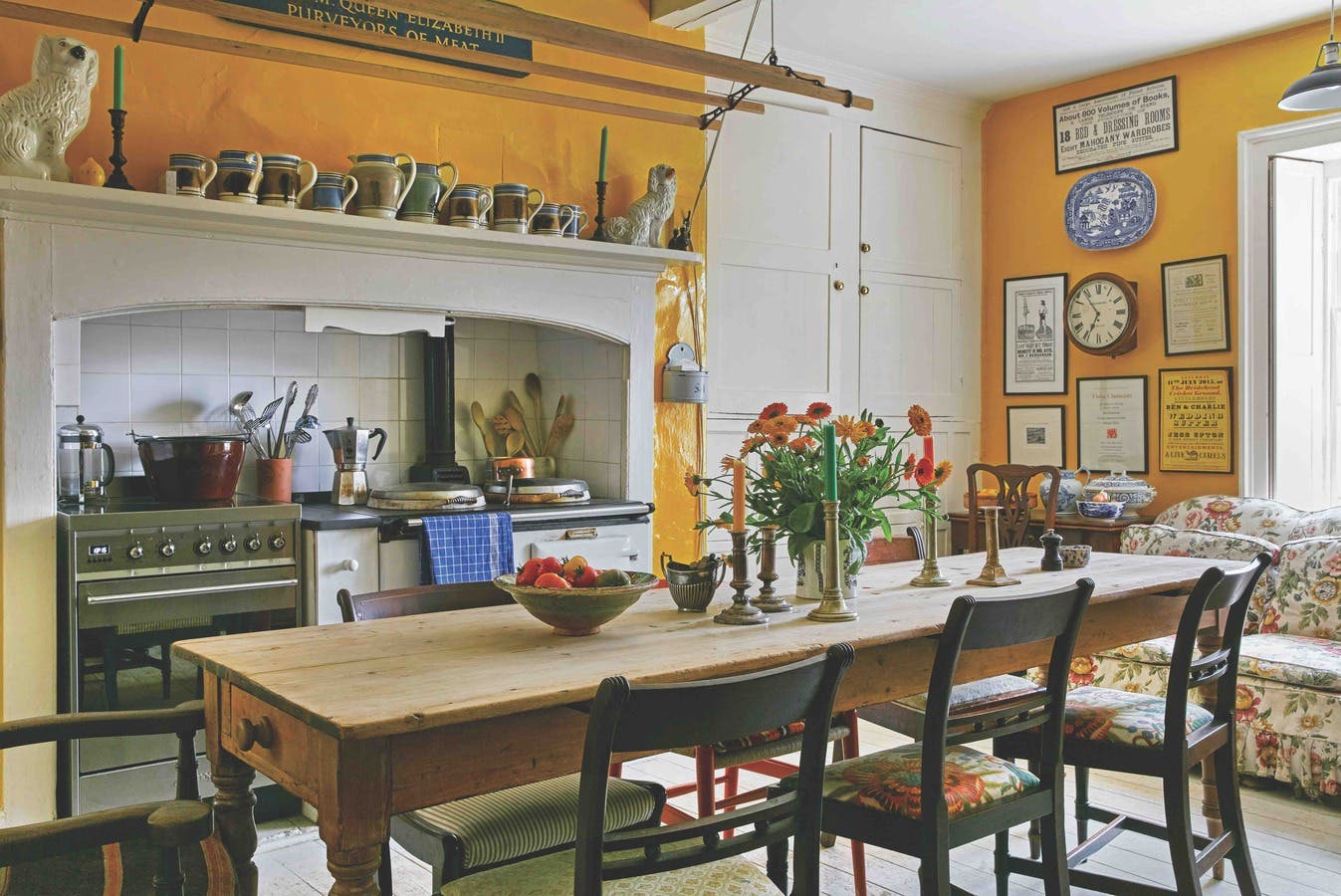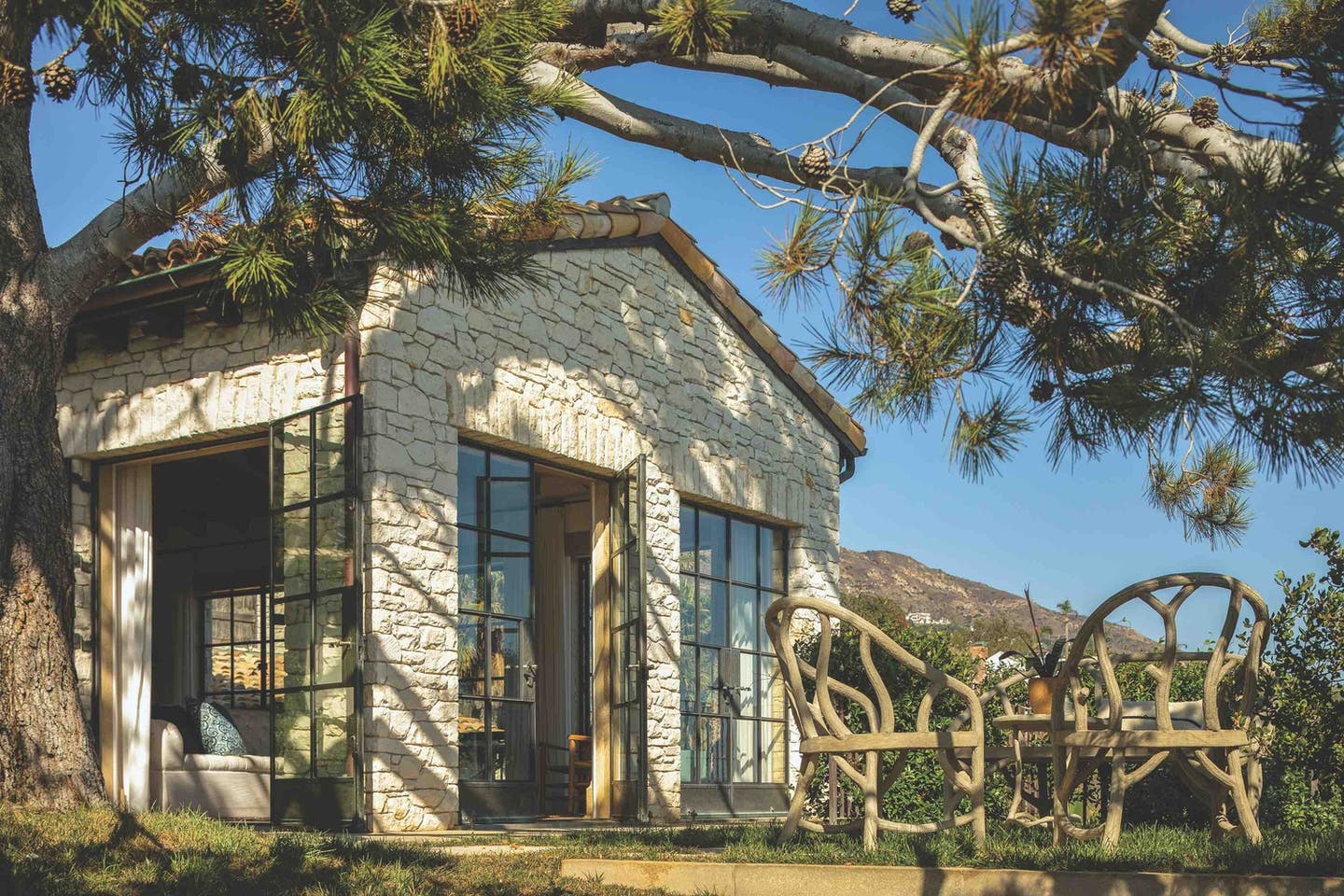
Projects
A Greek Revival by Historical Concepts
Forty miles west of Charleston, set along the banks of the Ashepoo River, this 1,800-acre property dates back to 1697 as a land grant from King Charles II. Here, pond, riverbank, Southern live oak, and loblolly pine mingle with the structural remnants of a plantation past. It’s believed that three homes were built onsite—all succumbed to either fire or natural disaster. Times changed, but the land’s natural beauty persisted.
“When our clients purchased the parcel, the original house had been rebuilt over the years and was small and insignificant compared to the scale of the property,” explains Terry Pylant, senior principal at Historical Concepts, an award-winning architectural firm based in Atlanta. In its place, they wanted a home that expressed their passions for history, art, land conservation, hunting, and exotic collectibles.
“The clients envisioned a home that would draw from the setting’s historic elements, evoking a sense of age but also a feeling of welcome and ease,” summarizes Pylant, who, along with project manager Ryan Yurcaba, collaborated with builder Terry Hoff and interior designer Barbara Westbrook on the intricate project. Construction lasted nearly two years and required the skillful application of both modern techniques and old-world craftsmanship. “From the interior trim carpentry to the floors to the cabinetry, we had some phenomenal artisans working on this project,” notes Pylant.
Today, much of the land is within a conservation easement, protecting it from development and preserving sensitive river habitat for waterfowl. With the easement capping the main home’s size at 5,000 square feet, Pylant’s out-of-the-box response was to separate out sleeping spaces from the living/entertaining areas. Extending symmetrically off the main home and flanking an ornamental boxwood garden are two detached wings, one containing a gracious master suite and the other two private guest rooms.
“This solution is drawn from the historic forms of working homesteads where kitchens, drying rooms, and carriage structures would have been separate from the main house,” describes Pylant. “It’s a modern house, but we wanted it to tell a story as if it had changed and evolved over time.”
The owners developed a design narrative for their property rooted in the early 1800s, and Pylant contributed to this story by suggesting stately Greek Revival architecture, a favored style of the Antebellum South. A study in symmetry, the main home, reached via a winding oak allée, features a Greek Doric entry portico and roof parapet with delicate fretwork. The zinc roof and Savannah Grey brick are purposeful nods to regional Charleston flavor.
Scale was a vital consideration, notes the design principal. “The house itself is small relative to what you see around it, but its details are large. The front columns are two feet in diameter and stand almost thirteen feet tall. The front windows are four and a half feet wide and almost ten feet tall. Every custom detail had to fit stylistically and proportionally into the setting,” he adds.
Inside, the main pavilion’s unique layout begins with an 8 by 45 foot picture gallery, which doubles as both an entry vestibule and as wall space for art display. Immediately following is the great hall, which, at 25 by 45 feet in size, is a grand, inviting space for relaxing and formal dining. Dotted with hunting trophies and wildlife artwork, “It’s like a domestic version of a natural history museum,” points out Pylant.
Reclaimed oak trusses in the hall’s vaulted ceiling add character but also contribute to the home’s fictional timeline. According to Pylant, “It’s as if at some point in time, the ‘existing’ plaster ceiling had been removed and the timbers exposed to allow more light into the space.”
To the left of the great hall is the kitchen, which tells its own tale of the passage of time. “It’s meant to look like a porch that was enclosed around the 1920s, when electricity and indoor plumbing became available,” notes the designer. The exposed ceiling beams shift orientation to represent the extension of the “porch” off the main roofline. The beams were crafted from loblolly pine harvested onsite and faux painted by noted decorative artist Bob Christian.
In order to keep the kitchen’s look based in the ’20s, the design team nixed upper cabinets and opted for a rustic island with open shelving underneath. William C. Pritchard Co. crafted all of the custom cabinetry and cleverly hid the fridge behind paneling shaped like an ice box. Reclaimed heart pine flooring contributes to the new-old aesthetic.
Another entertaining hub is the storytelling room, a casual, sunlit space off the great hall and of equal width. Here, large steel windows frame views of live oaks and river beyond. “Its design cues stem from the idea that it was originally a veranda,” explains Pylant. Beyond the windows stand full fluted columns: “Because this elevation is visible from the river, the owners wanted a formal river façade,” he explains.
While much of the main pavilion facilitates gathering, Pylant snuck in a variety of private destinations for the owners, the most intriguing of which are his and hers galleries sited at either end of the long entry vestibule. The wife’s West gallery is lined with leaded glass cabinets to display her collections of Japanese art, snow globes, and various ceramics. Its ceiling, painted by Bob Christian, represents the night sky as it would have appeared on December 28, 1810 (the clients’ anniversary date plus the home’s invented circa year). Over 200 inset LED lights twinkle like stars.
The husband’s East gallery has its own decorative ceiling painted in the style of Audubon, inspired by the couple’s collection of 1800s prints from Birds of America. The artwork is directionally accurate and includes Charleston in the distance. Another quiet space is the library, which is paneled with sinker cypress, recovered from the bottom of the property’s original rice ponds and prized for its rich color.
Inside their master suite, aka the master pavilion, design elements, materials, and furnishings form a Colonial palette, evoking the early 1800s like much of the main home. Meanwhile, the styling of the master bath suggests it was added later in the 1920s or ’30s. The bathroom mass acts as a hyphen connecting the pavilion’s bedroom on one side and walk-in closet on the other. This arrangement suggests that the whole is comprised of converted outbuildings.
From corner to corner, the property is awash in intriguing features, including a restored parterre garden dating back to 1703, when the first home was presumably built. This oasis is just one success story of many—over the years, historic rice pond dikes were rebuilt, fields replanted, roads redone, outbuildings revived. A home befitting the property’s gravitas was always the missing piece.
“The owners have proven themselves respectful stewards of the land,” contends Pylant, “but with this house they’ve established a lasting legacy through design.”
Key Suppliers
Architecture Historical Concepts
Terry Pylant (senior principal) and Ryan Yurcaba (project manager), with Jim Strickland (founding principal), Camden McClelland, RA, and Paul Haislmaier, RA
Interior Design Barbara Westbrook Westbrook Interiors
Builder Terry Hoff Construction
Landscape Architect Hooten Land Design
Decorative Painting Bob Christian Decorative Art
Cabinetry William C. Pritchard Co.
Stone (in kitchen, baths) Walker Zanger
Exterior Moldings, Widow’s Walk Railing, and Fiberglass Columns Versatex and Stratton Creek Wood Works
Fiberglass Columns DMG Architectural Specialists in partnership with CBL Architectural Fiberglass
Steel Windows/Doors COMEP
Wood Windows Marvin
Zinc Roof Rheinzink
Plaster Artisan Charleston Plaster Co.
Interior Trim & Beam Erection Tree Marsh Woodworks
Misc. Antique Door Hardware and Fixtures Architectural Accents
Exterior Doors Stewart Brannen Millworks
Exterior Gas Lanterns Carolina Lanterns & Lighting
Exterior Brick, Interior Brick Floors Old Carolina Brick Co.
Exterior Shutters New Horizon Shutters
Interior Doors Berlin G. Myers Lumber Corp.
Belt & Pulley Ceiling Fans Woolen Mill Fan Co.








